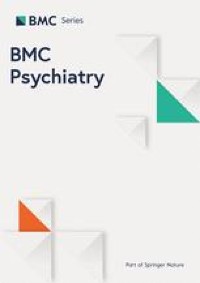Congenital disorders
Two-sample Mendelian randomization study does not reveal a significant relationship between cytomegalovirus (CMV) infection and autism spectrum disorder
ASD affects people worldwide and brings both health and economic burdens. As a widely known virus affecting the CNS in paediatric patients, CMV has long been suggested as a risk factor for ASD, yet no definite evidence has been found. To investigate whether CMV infection has a causal relationship with ASD, we conducted 3 MR analyses between ASD and unspecified cytomegaloviral diseases, anti-CMV IgG levels, and maternal CMV using GWAS summary data from the FinnGen and IEU Open GWAS projects.
A total of 15 variants were used as IVs in these 2-sample MR studies. Limited by low clinical prevalence, no variants significantly associated with CMV infection (default cut-off used in MR was p < 5 × 10− 8) were identified in these GWAS datasets. This normally used threshold of 5 × 10− 8 would predict an F statistic of approximately 30, and a higher F statistic means lower bias. However, all IVs but 1 (rs146990284) had an F over 10, indicating that they were not too weak instruments.
MR Egger regression, IVW, weighted median, weighted mode and simple mode were used in MR analysis. The results showed no causal relationship between CMV infection and ASD, indicating that CMV IgG positivity could not be considered a risk factor for ASD. Mendelian randomization studies could derive evidence with stronger strength than observational studies with a much larger sample size [13],thus partly covering the shortage of previously published studies with too few events (0–2) included.
While qualitative studies were limited by event number, quantitative studies were published. Slawinski et al. reported that maternal CMV seropositivity was related to autism symptoms (n = 82 and 68 for CMV-negative and CMV-positive groups,respectively) [20]. They used the Social Responsiveness Scale, Second Edition (SRS-2) as the ASD evaluation method, and in the maternal CMV sero-positive group, the mean score was 54.8, which was higher than that of the negative group (51.1). However, the population mean of the SRS-2 was expected to be 50, with a standard deviation of 10, and in ASD diagnosis, it was used as a categorical outcome (< 60 indicated normal and 60–65 indicated mild deficits in social interactions). This study indicates that CMV infection might contribute to a small part of ASD risk factors, which is not enough for a categorical outcome.
The main limitation of this study is the small number of IVs, and most IVs are not strong instruments, which is a consequence of the low clinical prevalence of CMV infection. A large number of IVs with strong evidence strength is not always available, and a small number of IVs with strong and specific biological links could also provide evidence. To further assess whether our IVs are informative or not sufficiently informative, we conducted a positive-control MR analysis between CMV and hydrocephalus [19] (Additional file 1). A significant causal relationship was found between unspecified cytomegaloviral diseases (5 IVs) and hydrocephalus. All 5 IVs from unspecified cytomegaloviral disease GWAS summary data had an F-statistic of approximately 20. However, the maternal CMV dataset with fewer IVs (3 IVs) did not have a positive result in the positive control. The negative results might be a consequence of a low proportion of symptomatic congenital CMV. Approximately 80–90% of CMV infections are asymptomatic [5, 6]. If only severe infections contribute to the outcome, then the number of events would be very low; consequently, a very large sample size is needed to assess the risk. These factors showed another limitation in this study. Asymptomatic CMV infection and infection with severe symptoms were not distinguished in the exposure datasets. Study 1 with an unspecified cytomegaloviral disease (symptomatic CMV infection) dataset could partly cover this shortage. The combination of all 3 studies could increase the sensitivity of finding causal relationships between CMV infection and other clinical symptoms.
Our results provide evidence that CMV infection does not directly increase ASD risk by 2-sample MR, and this evidence is stronger than observational studies. These results, together with published literature, show the complexity of ASD aetiology. Researchers should be more cautious when analysing the association between CMV infection and ASD. To further investigate the contribution of CMV infection to ASD aetiology, population-based studies with large sample sizes are needed, as is a better-designed attribution analysis.

